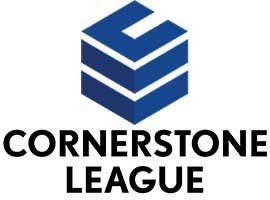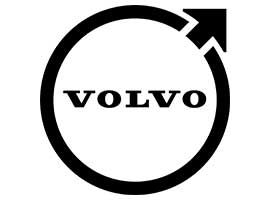
No More Why
Ever wondered what goes on in the brain when you ask a question with “why” in the beginning?
For most of us, we know immediately.
Our brain senses conflict and engages our natural defense system.
These defense mechanisms vary in terms of how they are activated. Their primary purpose is to help the mind cope with situations that may cause stress or strong emotional feelings.
Ask, “Why did you do that?”
Even said in the softest way possible, this question still engages a feeling that conflict is present and enacts the brain to defend its actions often leading to “deflection.”
Asking WHY causes the brain to associate the intent of the question to focus blame. But, what we wanted was to get a resolve, to find an answer, even pave the way to building cohesion. We simply wanted to understand.
Beginning a question with “why” can sometimes be counterproductive, especially in situations where the goal is to foster open communication, understanding, and collaboration. While “why” questions can be effective in certain contexts, they carry the risk of triggering defensive responses and hindering constructive dialogue. Here are some reasons why a person might consider alternatives to starting questions with “why”:
‘WHY’ QUESTIONS INCITE DEFLECTION.
Defense mechanisms like “deflection” are unconscious ways the brain engages without the person being fully aware it is happening.
When we deflect, our brain redirects the focused blame or criticism to something or someone else. It is a very natural reaction and most if not all have experienced it at one time or another.
Deflection is the brain’s way of preserving our self image.
A defense mechanism is a psychological strategy that individuals unconsciously use to cope with stress, anxiety, and emotional conflict. These mechanisms operate without conscious awareness and are employed to protect the mind from feelings or thoughts that are too difficult to tolerate.
Defense mechanisms are considered normal and are part of the human psyche.
However, the irony lies in the fact that, more often than not, when we ask “why,” our intention is not to attribute blame but to seek understanding, resolution, and perhaps pave the way for cohesive communication. Unfortunately, the brain’s automatic response hinders this genuine quest for comprehension.
Avoid or reduce conflict through cohesion and self-discovery. No more why questions.
‘WHY’ QUESTIONS ELICIT DEFENISVENESS
When someone is asked, “Why did you do that?” it can activate a defensive response. The person may feel accused or criticized, leading to defensiveness or a tendency to deflect blame.
‘WHY’ QUESTIONS CAN BE PERCEIVED AS JUDGMENTAL
“Why” questions can be interpreted as judgmental or confrontational, making the other person feel interrogated rather than engaged in a genuine conversation.
‘WHY’ QUESTIONS LIMIT INSIGHTFUL RESPONSES
People may struggle to articulate the reasons behind their actions when faced with a “why” question. This can limit the depth of insight and hinder meaningful communication.
‘WHY’ QUESTIONS CAN BE ASSOCIATED WITH BLAME
The word “why” can be associated with seeking blame or fault. This association may make individuals hesitant to provide honest answers, fearing repercussions or judgment.
‘WHY’ QUESTIONS TRIGGER RESISTANCE
Some individuals may resist answering “why” questions due to the perceived challenge to their autonomy or competence. This resistance can impede the flow of communication.
After years of working with individuals through personal development, training research, communication courses, and personal experience, I’ve developed a proven method to reduce the potential for conflict.
Introducing the S.E.E.D. Methodology, a Cohesive Communication Solution
This four step process is fully explained in my Cohesive Communication seminars and workshops and a valuable tool my coaching clients are taught to use for conflict resolution.
The S.E.E.D. formula involves the art of engaging self-discovery with others as a principle component. S.E.E.D. is based upon the premise of asking open-ended, non-leading questions in place of asking why.
Using this approach still gets to the WHY without asking WHY. It’s a clever way to trick the brain from ignoring its primary defense mechanism and engaging in a conversation without the association of blame or fear one has done something wrong.
For instance, using questions that begin with “what,” “how,” or “tell me about” can often lead to more detailed and thoughtful responses. These types of questions invite the person to share their perspective and contribute to a collaborative and constructive conversation.
Once you learn the S.E.E.D. formula, it is easy to replicate over and over again. It’s application is great for coaching, mentoring, and offering criticism without inducing or creating conflict. The S.E.E.D. formula applies to any conversation regardless of topic when the intent is to seek information.
Ultimately, the choice of how to frame questions depends on the specific context, the relationship between the individuals involved, and the desired outcome of the conversation. Being mindful of the potential impact of “why” questions and considering alternative approaches can contribute to more effective communication and conflict resolution.
For my local Charleston folks, you can join me on October 5, 2023 from 9:30 to11:30 am at the new Cohesion Culture™️ headquarters at 11 eWall Street, Mt. Pleasant, SC for the in-person, instructor led Cohesive Leadership Workshop Series: Conflict Resolution.
Email me for details. I’d love to see you in the workshop.
Are you subscribed to ‘Cohesion Corner™ with Dr. Troy!’? I encourage you to subscribe and receive a new article every other Wednesday delving into the intricacies of effective communication, conflict resolution, and more. Click here and subscribe to have the newsletters delivered directly to your inbox.
For additional insights on related topics, feel free to explore my previous newsletters, covering subjects such as embracing generational diversity, tackling HR challenges through gamification, and combatting disengagement & burnout:
- Embracing Generational Diversity in the Workplace for Enhanced Cohesion
- Tackling HR Challenges Through Gamification
- 7 Ways Cohesion Combats Disengagement & Burnout
In summary, let’s embrace effective communication and conflict resolution strategies to create a more cohesive and harmonious work environment. Join me on this journey of self-discovery and enhanced communication skills.

Delve deeper into the realm of Conflict Resolution by registering for the first session in our Cohesive Leadership Workshop series. This immersive experience offers a chance to engage in a proven method that promotes communication through self-discovery. Learn the power of asking open-ended, non-leading questions using the Cohesion Culture™ S.E.E.D. formula. Participants will have the opportunity to discuss and role-play, honing their conflict resolution skills in a supportive environment.






